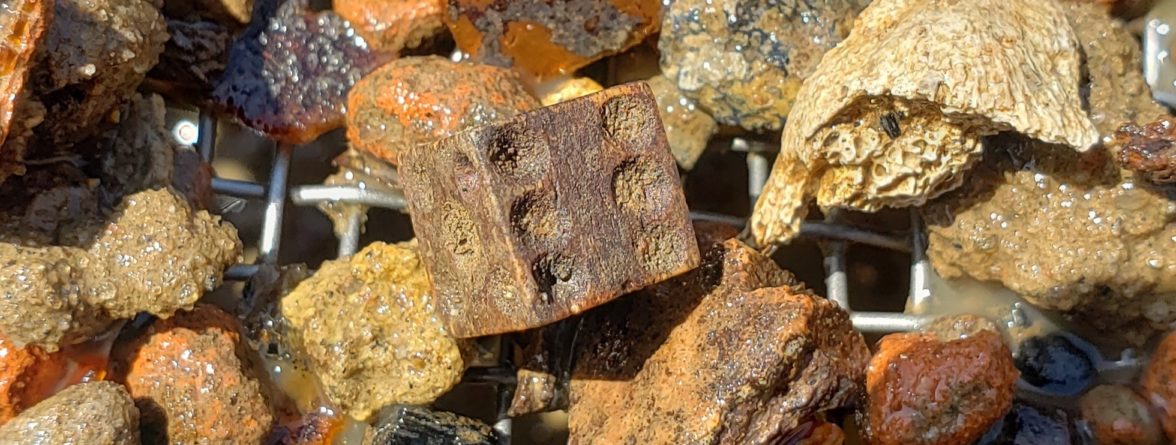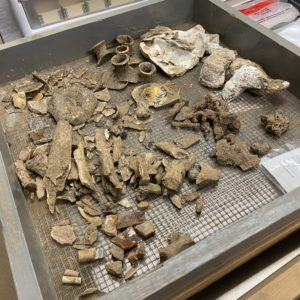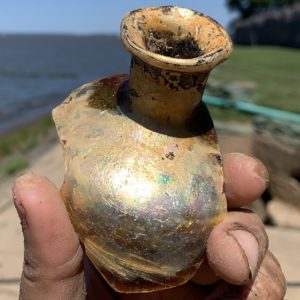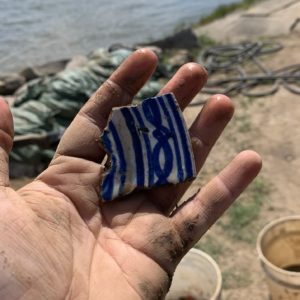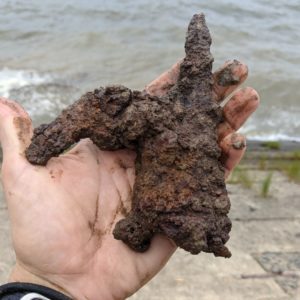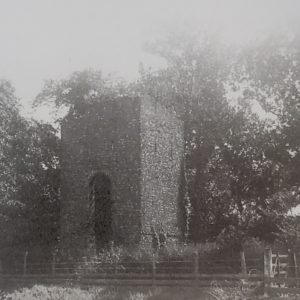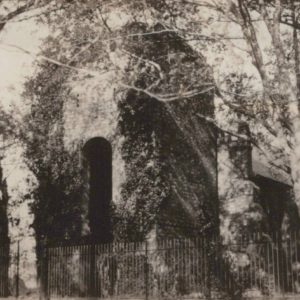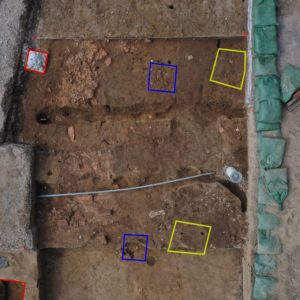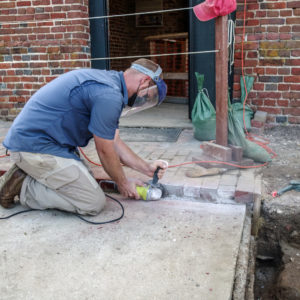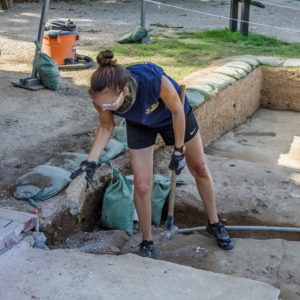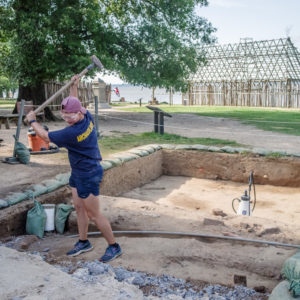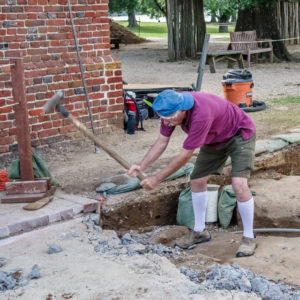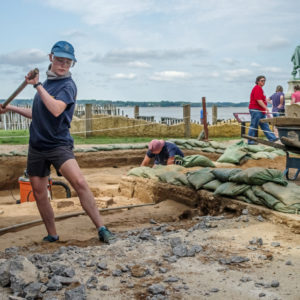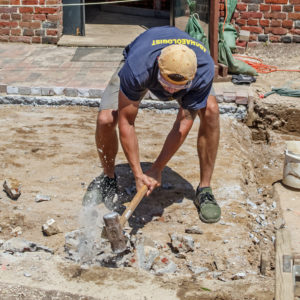The summer—and our excavations—have been in full swing here at Jamestown over the last month. The team continues to excavate both at the historic Seawall, and just outside of the 17th-century Church Tower.
At the Seawall, we have been fighting back the rising tide. The recent rains have caused some flooding in our excavation areas, but we are still able to excavate the 17th-century midden in that space. We are finding large amounts of artifacts from the first half of the 17th century, including additional local tobacco pipes, German stonewares, and even a jetton! Jettons were counting tokens, and were used to aid in accounting, not unlike an abacus. We have also been uncovering a large amount of animal bone. Once analyzed, these bones will tell us what the colonists were eating at Jamestown during the first half of the 17th century.
At the Church Tower site, we have uncovered a mix of both modern and historic deposits. Some are very recent: a water line installed in the 1990s cuts through one of the units. Some are slightly older, like the remains of a metal fence that once encircled the Church Tower, or the barbed wire fence that preceded it. While excavating through some possible 17th-century landscaping fill, the team found some excellent artifacts that will help us date the material below.
Despite the modernity of some of these features, it is still exciting to see how the landscape shifts over time. For example, the three renditions of the church fence (rail fence -> barbed wire fence -> wrought iron fence) give us an idea of how tourism at the site expands throughout the 20th century. Since these recent features have already disturbed the soil, once we excavate them we have a sneak-peak of the intact historic layers. This has been especially helpful to us in tracking the burned layer across the site before we uncover the whole layer. It is also imperative that we excavate the more modern features first so that any of the artifacts within do not contaminate a much older context.
We have also just removed a portion of the modern brick pathway that extended out in front of the Church Tower. This path was bedded with concrete, and our staff had a great time using a sledgehammer to break up this block. Underneath, we are confident there will be 17th-century features. One of the main features we expect to find is a brick pathway. We uncovered a portion of this pathway back in May, and found that it was constructed identically to one we found in the churchyard last year. Both were built with bricks dry-laid on-end, and now it seems that the features may be part of an overall path around the church. Based on the surrounding layers, it is likely that the path dates to the latter part of the 17th century.
We may also find more historic post holes. The excavations at the Tower site are situated in the exact area we would expect to encounter a building inside the Fort from ca. 1607-8. These early structures would have been earthfast, meaning post holes, and the occasional cellar, would be the primary remains of these buildings.
related images
- A small sample of artifacts removed from the Seawall midden.
- One of many case bottle tops that have been pulled out of the midden by the Seawall.
- A bone die found in the Seawall midden.
- A piece of Delft found in the Seawall midden. This is just one of multiple ceramic types found in this location so far.
- Part of a pig jaw and orbital that came out of the Seawall midden. Large amounts of animal bone (some displaying butcher marks) have been pulled out of the Seawall midden as well.
- A possible sword hilt that was pulled out of the midden by the Seawall. Once the corrosion is cleaned off of the artifact we will know more about it.
- A photo of the rail fence (1883) in front of the tower. This is one of many fence iterations, preceding both the barbed wire and wrought iron fences.
- The barbed wire (1901) fence surrounding the church.
- The wrought iron fence (1906) surrounding the Memorial Church.
- An overhead drone shot displaying the multiple iterations of fences located in front of the Church Tower. The fences go from earliest to latest from left to right – yellow is the rail fence, blue is the barbed wire fence, and red is the wrought iron fence.
- Senior Staff Archaeologist Sean Romo uses a diamond grinder to cut through the concrete, ensuring a clean break along the edge of the test unit while sledgehammering.
- Site Supervisor Anna Shackelford moves concrete out of the way before continuing to sledgehammer.
- We do not often get a chance to use the sledge hammer, so everybody got to take a turn. Staff Archaeologist Caitlin Delmas was one of the first up.
- Site Photographer Chuck Durfor tries his hand at concrete removal.
- Staff Archaeologist Natalie Reid takes her turn at sledge hammering.
- Staff Archaeologist Ryan Krank sledges out the first of three concrete steps.
- Anna shovels the remainder of the rubble left behind after hammering out the concrete bed.
- An overhead drone shot illustrating the brick pathway found just outside of the Church Tower. This pathway is extremely similar to another found in the church cemetery.


